Antarctica and year 1991
What is Antarctica?
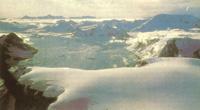
Antarctica is a territory. Also called “sixth continent”. Where is it located? It is an antipruning of the North Pole in polar antactic zones.
Its surface is 14 million km 2. Three oceans swim their coast: Atlantic, Bareak and Indians. In general, Antarctica is divided into two parts: West Antarctica and East Antarctica. West Antarctica is the smallest region and its coastline is bathed by the Weddel and Ross seas. In this territory there are 5,000 m high mountains that closely resemble those of Patagonia. This is one of the facts of continental drift theory.
It is the largest East Antarctica and the territory with the highest concentration of ice. 90% of the total world ice is found in this territory. This icy territory is very large and has a depth of 2500-3000 m. The two seas mentioned above permeate two large glaciers. These glaciers have large walls of ice on their shores. And from these glaciers emerge the large ice blocks known as iceberg. Another important plot is the so-called Antarctic peninsula. It is a territory that extends to Argentina.
Antarctica's climate is very harsh. The maximum temperature reached (in summer) does not exceed 0ºC and the lowest can be -80ºC. Because of these low temperatures the pressure is very high, but on the coast, due to the influence of the ocean, the pressure is lower and the temperature is higher. These pressure differences produce the cold winds of Antarctica.
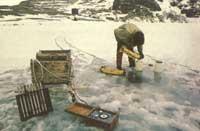
The fauna and flora of Antarctica is not very rich, due to the importance of the impact of climate on living conditions. No fauna or flora is found due to low indoor temperatures. The flora and fauna of this territory is located on the coast and its surroundings. As for the flora, you see moss and some types of lichens. And as for the fauna, the most studied are the krill, the blue whale, the hog, the big storm bird, the orca, the sea elephant, the sea lion, the seal or seal, the págalo, the white págalo, the albatrosa and three types of penguins: the antarctic, the emperor and the sphenicus.
Who discovered?
The first person to arrive in Antarctica via a boat was James Cook, on January 17, 1773. Later, in 1820, a Russian named Fabian Von Bellingshausen arrived in Antarctica. From there the whalers arrived in these lands in search of the whale and began to know the territories of Antarctica. They named each of the parts of the territory they knew. For example, Captain Weddel named a sea, Kemp to a part of the territory (Kemp), Captain Ross to the Ross Sea, etc.
XIX. In the 19th century, two men, each on their side, arrived at the South Pole. December 14, 1911, R.E. Amundsen used sledges and dogs to reach the south pole. And on January 18, 1912 R.F. Scott was the second person to reach the South Pole. But his journey was tragic, because he lost all his friends and returned alone.
From these years few states organized expeditions. States that showed greater interest in Antarctica were: Great Britain, Australia, Norway, Argentina, Germany, New Zealand and South Africa. And these were precisely the states that built the first scientific centers (or camps) in Antarctica.
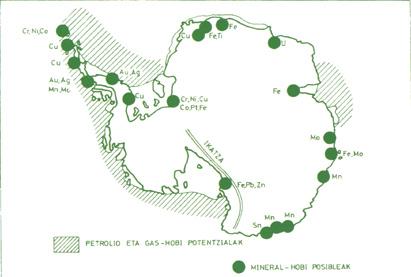
Reasons for the national interest of Antarctica
Why is so much a nation interested in having a part of those territories? The reasons are three:
- geological
- strategic strategy
- scientists
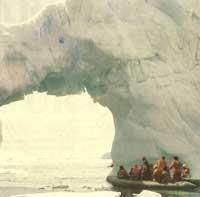
First, we will analyze the geological causes: those that have had great importance are mineral resources. The origin of geological studies was the discovery of coal. As scientists researched the land, they realized that mineral resources were of all kinds, given the large reserve of oil: 45 billion barrels. Large reserves of natural gas have also been found: 115 million m 3 approx. There were many deposits and also rich in the following metals: iron, platinum, cobalt, nickel, copper, gold, tin, chromium, molybdenum, uranium, etc.
To know the size of these reserves, we will quote the coal and iron mines: These coal and iron cores located south of Antarctica resemble a 120 km long, 100 m deep mountain. They realized that these reserves served to maintain a global consumption of 200 years. On the other hand, the Antarctic peninsula is considered to be the richest territory in Antarctica. It preserves in its interior large reserves of oil, gold, nickel, copper, tungsten and uranium. There are two important problems to avoid contact with mineral resources: one is an economic problem, since mining in this climate is expensive and another is a moral and/or ecological problem. The exploitation of these mines can lead to major changes in the ecological system. As we can see, the important consequence of these geological reasons would be economic interests.
The second reason is strategic: The world's most powerful states have their own modern camps in Antarctica, although the militarization of Antarctica is impossible thanks to laws. For example: France has always wanted to make a runway with the excuse of bringing food to their camps. But where they wanted to make a track, live the largest number of birds in Antarctica. Therefore, they realized that building an airport could pose an ecological problem.
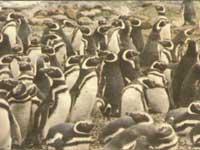
The third and last reason would be the scientific one, given the importance of the flora and fauna present in Antarctica. What kind of life do you have in those conditions? and how do they take advantage of getting ahead? To answer these questions, scientists conducted research in Antarctica itself, hoping that the answers would be reliable. Research on human behavior was very interesting. They served to know how man reacted in these harsh conditions. In marine research, for example, the small oscolic called krill has been known.
For some animals it is a special food, especially for whales because it is the food they like most. Soviets and Japanese were the first to use them as food. Today it has become a much appreciated food. The reserve of this oscolic is 1,000 million tons. Many states have begun to fish krill because it has begun to gain fame as food.
Studies with different animals have also been conducted. Because of the possibility of living in their ecosystem, the work done by scientists and the conclusions obtained will be highly reliable. Research has been done on a special type of penguin, the Antarctic Penguin, for example. As this type of penguin has been investigated, the behavior and lifestyle of many other animals has been analyzed. Due to the influence of the climate, the flora is very scarce and there is little variety of plants. The most visible types of plants are two: mosses (although they are very scarce) and lichens. 350 kinds of lichens have been found, but they have hardly been investigated.
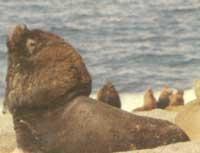
Today, more and more scientists are investigating the ozone layer problem. It has been observed that the ozone layer has a large hole and is also located in Antarctica. We must take into account the possible consequences of this hole (overheating of the earth, climate…). Society must understand that the conclusions of these investigations are a warning. How would this ozone layer affect if the hole increased? To solve this problem in part, the best solution would be the greater sensitivity of States and large industries to pollution. May that sensitivity not come too late! News
Antarctic Convention
To control the excesses of states in Antarctica, some states signed an Agreement. When was it done and why did it arise? States that built the first camps in Antarctica and showed greater interest signed this Convention on 1 December 1959. The objectives of the agreement were: That all States undertake to respect the natural life of Antarctica and that the actions that can be carried out in that territory are of one kind: scientific research.
The signatory States of this Convention were 12. We can divide these States into two groups: in one of them will be the States that claimed territories: Argentina, Chile, Australia, France, New Zealand, Great Britain and Norway. And in the other, the nations interested in those territories: United States, Soviet Union, South African Republic, Belgium and Japan.

In 1991 the revision of the Convention was drafted. In 1982, States interested in participating in the Convention began to develop or construct the Antarctic Statutes. As an example, laws were developed to control mineral resources.
In 1991, what will happen to the Antarctic Convention? And what is the reason for its importance? This Convention, made in 1959, managed to stop the mineral exploitation of some States. What was done thereafter in Antarctica was under control and that control was carried out by the signatory states of the agreement. However, these farms were not carried out due to the lack of economic and technological capabilities and the harshness of climate exploitation.
In this review we will mention some of the problems that will be addressed. States that have signed this Convention shall not allow another State to appropriate the parts of the territory. To do so, it says there is a clause in the Convention. Therefore, the first thing that must be done is to remove this clause because of those territories all states have the same rights.
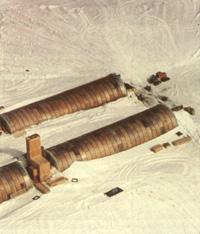
States wishing to participate in these territories may only participate as advisors. For this purpose they establish two conditions: the State's interest in scientific research and the presence of people in the camp throughout the year. Spain intends to participate and has begun to build its camp in Antarctica. Its budget amounts to 3,000 million pesetas. In view of this amount, Spain's interest in Antarctica is evident.
Another problem in reviewing will be that many new states want to participate in the Convention and in Antarctica. Specifically, in 1991 there were 28 States interested in participating in the Convention. After seeing the number of new states, will the old allow the new ones to participate in this territory? Here the old states will put great obstacles. At first there were 7 states that took part in Antarctica and believed that they owned that territory. And now, seeing the interest of these states, it will cost them a corner.
Therefore, taking care of the nature of Antarctica with many States will be difficult and what will have to be done is cooperate among all (among States) at all levels. And on the other hand, it must be made clear that in Antarctica all states have the same rights. At present, the economic and technological possibilities can facilitate the exploitation of the minerals of that territory. The control of these farms will require the elaboration of a series of laws.
This will be part of the Convention. In my opinion, the first thing to take into account the Convention is that in any action (farms, buildings,...) Minimize the alteration of the ecology of Antarctica, given the importance of this territory in Nature. Antarctic states will have to forget their policy for Antarctica to survive. It will be very difficult, but for this a new Convention will be necessary in 1991.
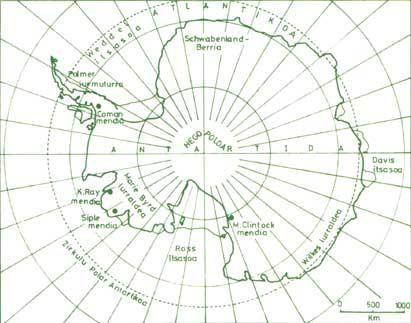
Buletina
Bidali zure helbide elektronikoa eta jaso asteroko buletina zure sarrera-ontzian










